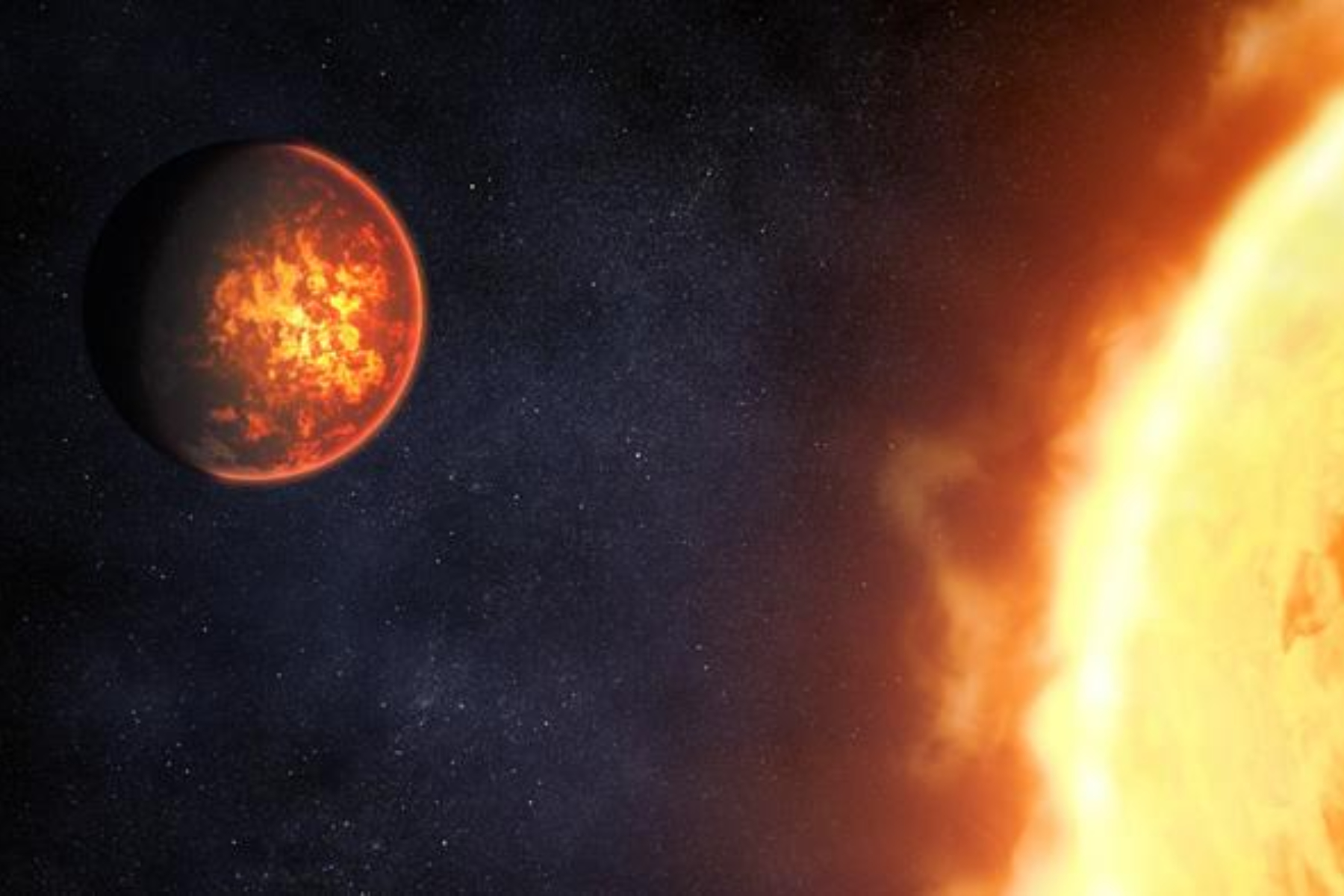A roiling-hot exoplanet billions of miles away has been discovered, dotted with so many volcanos that it would visibly glow in the darkness of space.
This planet, named TOI-6713.01, orbits a star situated around 66 light-years away from our solar system and is a rocky world around 30 percent larger than Earth, according to a new paper in The Astronomical Journal.
This planet has been found to be extremely hot, with a surface temperature of around 4220 degrees Fahrenheit, hotter than the surface of some stars.
“It was one of those discovery moments that you think, ‘wow, it’s amazing this can actually exist,” study author Stephen Kane, a University of California, Riverside astrophysicist, said in a statement.
NASA, ESA, CSA, Dani Player
According to the researchers from UC Riverside, it would appear something like the extremely volcanic moon of Jupiter named Io, which is constantly humming with volcanic explosions.
“This is a terrestrial planet that I would describe as Io on steroids,” Kane said. “It’s been forced into a situation where it’s constantly exploding with volcanoes. At optical wavelengths you would be able to see a glowing, red-hot planet with a molten lava surface.”
The planet was spotted in data collected by NASA’s Transiting Exoplanet Survey Satellite, or TESS, which was studying the planet’s star HD 104067. This star was known to have one giant planet and a rocky planet, but this new paper reveals that it found another rocky world orbiting the star as well: TOI-6713.01.
The researchers theorize that this new planet may be so volcanic for the same reason that Io is: because of the powerful effects of gravity from its parent body.
Io is the most volcanically active body in the Solar System. Its surface is covered with hundreds of volcanoes, many of which are capable of ejecting plumes of sulfur and sulfur dioxide hundreds of miles into space.

ISTOCK / GETTY IMAGES PLUS
This intense activity is primarily due to the tidal heating caused by gravitational interactions with Jupiter and the other Galilean moons. Jupiter’s powerful gravitational pull, paired with the influence of the other moons, pulls Io into a strange elliptical orbit.
This intense tidal energy squeezes and stretches the moon and triggers increased geophysical activity within Io’s center, making it volcanically active.
“If the other moons weren’t there, Io would be in a circular orbit around the planet, and it would be quiet on the surface. Instead, Jupiter’s gravity squeezes Io so much that it erupts in volcanoes constantly,” Kane said.
They suspect that a similar process has occurred with TOI-6713.01 and the other two planets in the solar system, forcing it into an elliptical orbit and exerting tidal forces on its insides. This internal friction deep inside the planet’s interior could then drive the extreme volcanic activity that would explain its extraordinary surface temperature.
“This teaches us a lot about the extremes of how much energy can be pumped into a terrestrial planet, and the consequences of that,” Kane said. “While we know that stars contribute to the heat of a planet, the vast majority of the energy here is tidal and that cannot be ignored.”
Do you have a tip on a science story that Newsweek should be covering? Do you have a question about exoplanets? Let us know via [email protected].
Uncommon Knowledge
Newsweek is committed to challenging conventional wisdom and finding connections in the search for common ground.
Newsweek is committed to challenging conventional wisdom and finding connections in the search for common ground.

Dr. Thomas Hughes is a UK-based scientist and science communicator who makes complex topics accessible to readers. His articles explore breakthroughs in various scientific disciplines, from space exploration to cutting-edge research.








